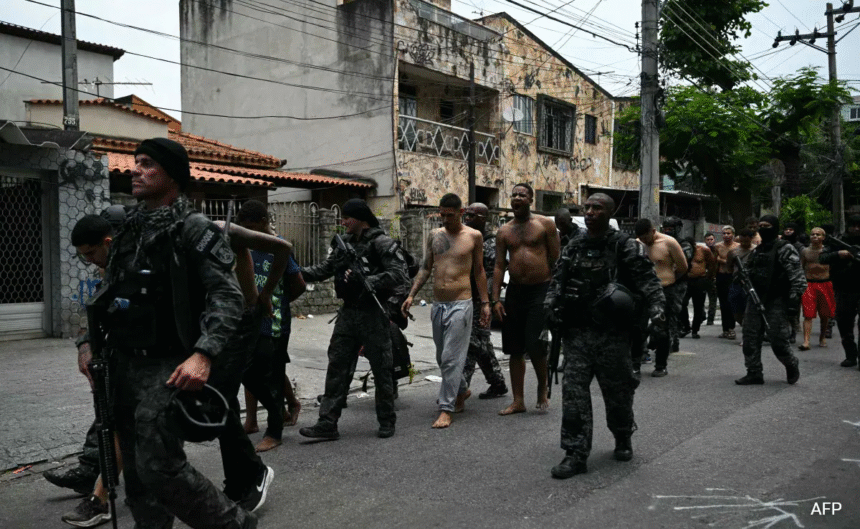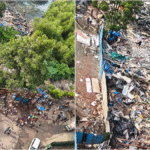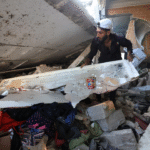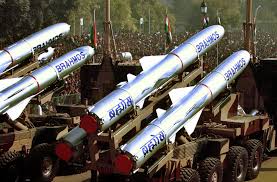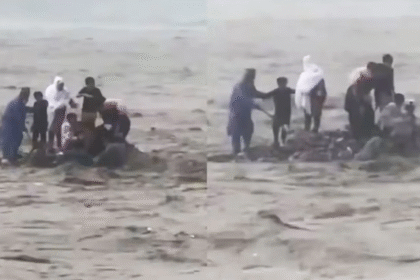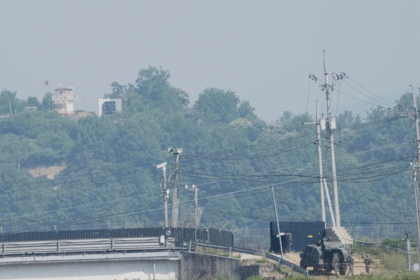Brazil Police Accused of Displaying Teen Gangster’s Head ‘Like a Trophy’ After Deadly Anti-Drug Raid That Killed 120+
Over 120 people were killed in a massive Brazil anti-drug raid, sparking global outrage as police were accused of displaying a teen gangster’s head ‘like a trophy
In late October 2025, the city of Rio de Janeiro witnessed what experts are calling its deadliest‑ever police operation, where over 120 people were killed in a massive anti‑drug raid. At the centre of the storm are horrifying accusations — that law‑enforcement officers decapitated a 19‑year‑old alleged gang member and displayed his head from a tree “like a trophy”. The event has ignited domestic protests, international condemnation and urgent questions over policing, human rights and state power.
The operation — widely reported as “Operation Containment” — was launched on 28 October 2025 by the Rio state government. With some 2,500 police officers and soldiers, supported by armoured vehicles, helicopters and drones, the target was the powerful drug faction Comando Vermelho operating in northern‑Rio favelas, notably Complexo da Penha and Complexo do Alemão.

Authorities say the militants fought back fiercely, reportedly deploying explosives, drones and barricades. Governor Cláudio Castro declared the operation a success, insisting that those killed were criminals engaged in “narco‑terrorism”.
The initial official death toll stood at 119 (115 suspects and 4 police officers) according to state police. However, the state public defender’s office places the figure closer to 132.
What has caught global attention is the manner of the killings. Grieving families and human‑rights activists say many bodies bore signs of torture: tied hands, burn marks, execution‑style wounds. Among them is the claim by a mother, Raquel Tomas, that her 19‑year‑old son’s throat was slit and his head hung “from a tree like a trophy”.
The escalating territorial control of Comando Vermelho in Rio’s favelas, and their alleged growing use of drones and explosives against police.
The impending hosting of international events by Brazil, including the COP30 climate summit, raising urgency in projecting authority and safety.
A long‑running frustration with violent crime, gang control and the failure of conventional policing methods in the favelas.
In the wake of the operation, hundreds of residents gathered to protest in the Penha complex and other affected neighbourhoods. They demand accountability, with signs reading “Stop killing us” and chants against Governor Castro.
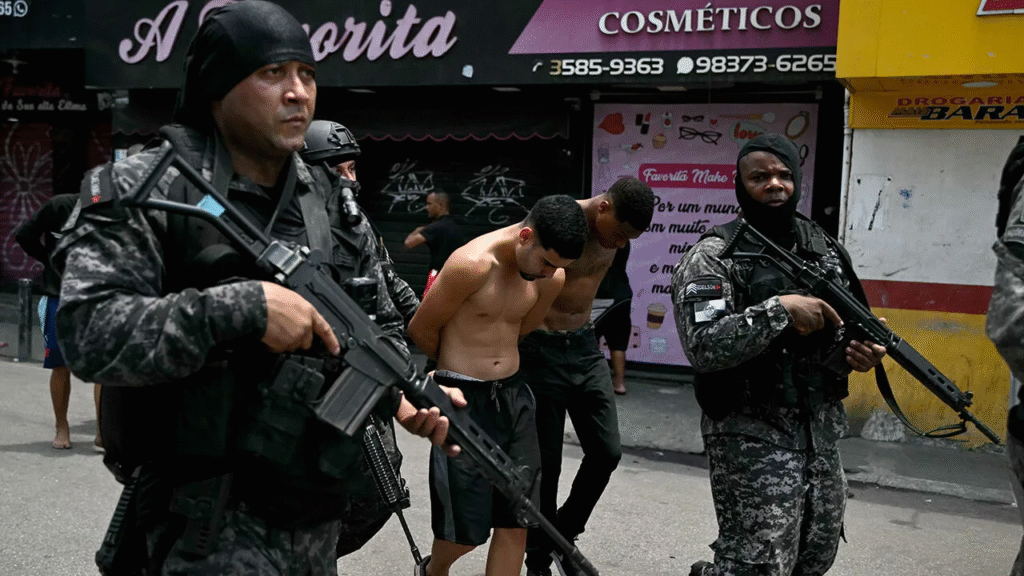
The federal government, human‑rights organisations and the United Nations have expressed deep concern. UN officials emphasised that the use of lethal force must align with international human‑rights standards.
Legal processes are now in motion: the Supreme Court of Brazil has summoned officials to explain the operation; prosecutors demand detailed autopsies and independent investigations.
For residents of the targeted favelas, the emotional and social cost is profound. Many who were killed were young men, some alleged gang members, but others possibly caught in the crossfire. The hail of bullets, the parade of bodies lined up in public squares, and the fear that anyone could be next has deepened a sense of vulnerability.
Such events exacerbate distrust between communities and the state. If policing becomes indistinguishable from war, the social fabric frays.
Effectiveness: Do mass killings reduce gang strength, or simply re‑energise it? Some evidence suggests that heavy‑handed raids may force gangs underground, making them more unpredictable.
Collateral Damage: How many of the dead were actually combatants vs. civilians? With bodies found in forests and many unidentified, the transparency is weak.
Legal Norms: Extrajudicial killings erode justice and invite impunity. When the state kills first and investigates later, trust collapses.

Long‑Term Governance: Even if the immediate target is hit, what replaces the power vacuum? Without effective social, economic and governance reforms, the cycle restarts.
Brazil has had a troubled history with lethal police operations. For instance, the famous Carandiru massacre in 1992 resulted in 111 inmates dead The current toll (120‑plus) surpasses that, underlining the gravity.
Internationally, norms such as the UN’s Basic Principles on the Use of Force and Firearms by Law Enforcement Officials emphasise proportionality, necessity and accountability. The allegations of severed heads, tied victims and poisons fly in the face of such norms.
Independent investigations: Will a credible, transparent inquiry uncover the truth about who gave orders, how many civilians died and whether human‑rights law was breached?
Policy response: Will the state adopt less lethal, more community‑based policing models, or double down on militarised tactics?
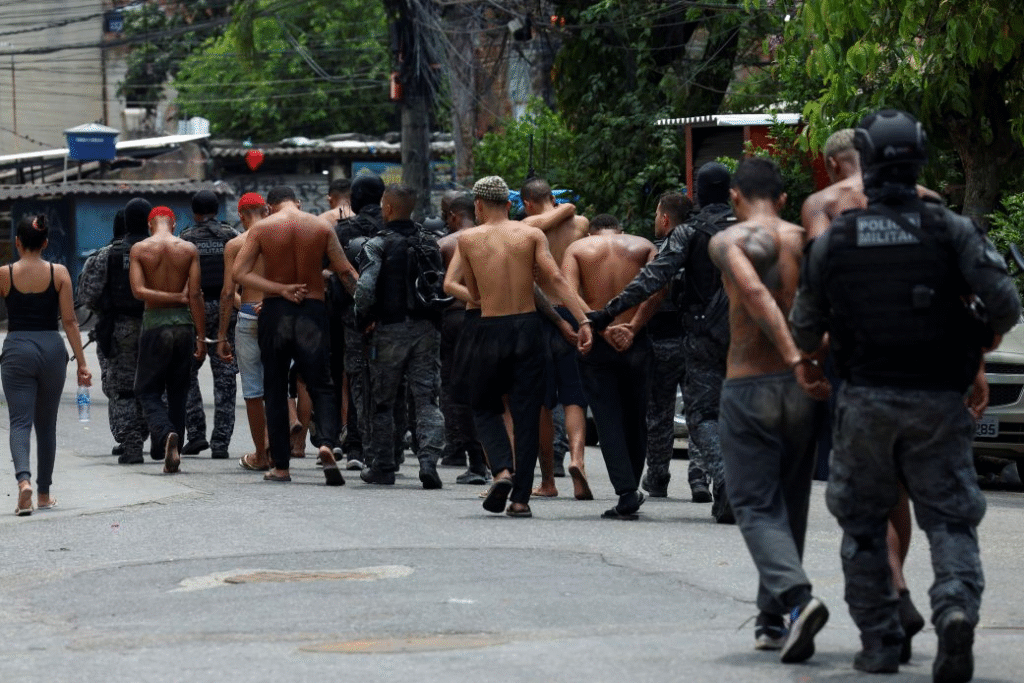
International pressure: Will global institutions impose consequences or funding conditions on Brazilian security agencies?
Community rebuilding: How will justice‑for‑victims, mental‑health support and infrastructure rebuild efforts proceed in the favela zones?


